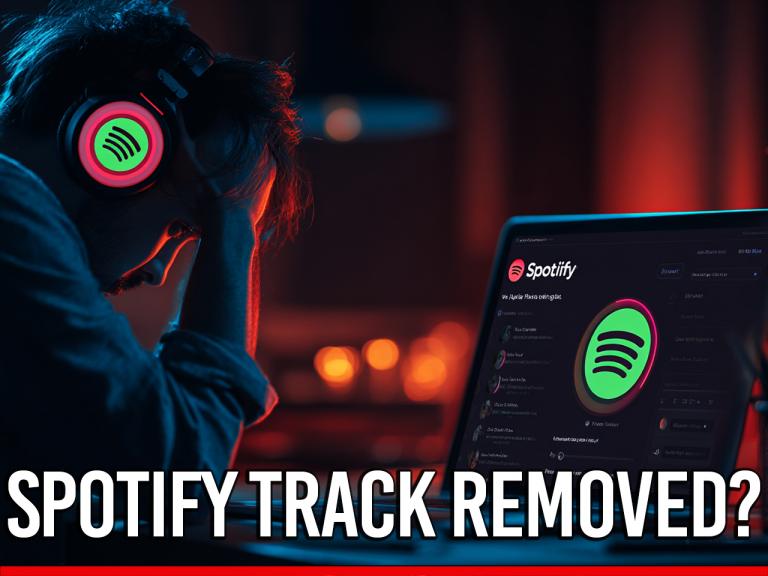
If Spotify suddenly removes your track without warning, you’re not powerless. This guide walks you through confirming what really happened, identifying the cause, gathering evidence, and knowing the right channels to escalate. From copyright claims to artificial streaming flags, learn the first steps to protect your music and appeal.
Spotify Removed Your Track Without Notice: How to Investigate and Appeal
This is a practical, fact-based guide for artists, managers, and labels. It explains why removals happen, how to confirm exactly what changed, and how to pursue an appeal through the proper channel. This is not legal advice.
Quick take
- Spotify can remove or disable content when it believes rules were broken or rights are in dispute. That power comes from the terms you agree to through your distributor or label.
- Your distributor or label controls deliveries, takedowns, and reinstatements. Start there first for answers and action.
- Confirm what actually changed using exact Spotify URIs and by checking territory availability. Do not assume the whole catalog was removed.
- Most removals come from one of four buckets: copyright complaints, artificial streaming enforcement, platform rules, or delivery/metadata issues.
- If there was a copyright takedown, there is a formal counter notice path under U.S. law. Your distributor usually handles it.
Step 1: Confirm what changed, where, and when
- Find the exact Spotify URI. In the desktop app, right click the track or album, choose Share, then hold Alt or Option to copy the Spotify URI. Each version has its own URI. Save these in your notes.
- Check your distributor dashboard. Look for delivery logs that show a takedown, delete, end date, or new restrictions by territory. Note the timestamps and any reason codes.
- Document the timeline. Write down when you first noticed the change, what you saw in Spotify for Artists, and whether the issue is global or regional.
- Collect screenshots. Capture the Spotify page, your distributor logs, and any error or status messages.
Step 2: Identify the likely cause
Match what you see in delivery logs and emails to one of these categories:
- Copyright or trademark complaints. A rights holder reported your content. This often arrives via your distributor with a claim ID or legal notice reference.
- Artificial streaming enforcement. Spotify flags manipulation such as bots, click farms, or pay for streams services. Sudden spikes from suspicious playlists or services can trigger removal.
- Platform rules violations. Content that violates Spotify’s rules can be removed. Examples include hate content, deceptive practices, or unsafe content.
- Metadata or delivery issues. Incorrect ISRCs or UPCs, duplicate deliveries, wrong rights windows, regional restrictions, or an accidental delete can make a release disappear.
Step 3: Build your evidence file
Gather this before you escalate the issue. Keep it in a single folder you can share with your distributor or label.
- Artist name, release title, UPC, and ISRCs
- Spotify URLs and URIs for every affected track and the album page
- Date and time the issue started, with screenshots from Spotify for Artists
- Distributor delivery logs showing status changes, takedowns, or restrictions
- If fraud is suspected: playlist adds, curator contacts, ad invoices, campaign reports, and proof of legitimate traffic sources
- If copyright is suspected: split sheets, licenses, sample clearances, work for hire agreements, or other ownership proof
Step 4: Escalate through the correct channel
- Contact your distributor or label first. They have the delivery records and the pipeline to Spotify’s content operations. Ask them to pull logs, confirm the reason, and open a ticket if needed.
- If it is a copyright takedown. Your distributor will usually handle a counter notice when appropriate. After a valid counter notice, restoration can occur if the claimant does not file a lawsuit within the statutory window. Get legal advice if you are unsure.
- If it is artificial streaming. Provide your campaign evidence and explain your traffic sources. Ask for the content to be reviewed and reinstated if the activity was legitimate.
- If you truly cannot use the distributor path. As a last resort, use Spotify’s public help routes for rights complaints or account issues. Reinstatement of delivered releases usually still requires distributor involvement.
Step 5: Use a clear, complete request
Email template to your distributor or label
Subject: Urgent: Unexplained Spotify takedown for [Artist – Release] Hi [Name], My release “[Title]” (UPC [UPC], ISRCs [list]) has been removed from Spotify. Here are the Spotify links and URIs: [paste]. The change appears to have happened on [date]. Please check delivery history and availability, including past deliveries, deletes or end dates, territory restrictions, and any reason codes. If a takedown was sent, please share the reason and open a ticket with Spotify Content Operations if appropriate to reinstate rights. Background and proof: [brief facts about campaigns, playlists, ownership, and attached documents]. Thank you, [Your name, role, mobile]
Step 6: Prevent a repeat
- Avoid any guaranteed streams or pay for placement services. These are high risk and can trigger enforcement.
- Keep metadata clean. Use correct ISRCs and UPCs, and verify territories and start or end dates before delivery.
- Maintain a release dossier. Store ownership docs, split sheets, licenses, ad reports, playlist outreach, and invoices in one place.
- Audit playlists before pitching. Favor editorial and reputable independent curators. Be wary of unknown lists promising big numbers.
FAQ
Can Spotify remove content without warning?
Yes. Platforms reserve the right to remove or disable content when rules or rights are at issue. The specifics are in the terms you accept through distribution.
Who do I contact first if music disappears?
Your distributor or label. They control delivery to Spotify and can see the exact delivery and availability status.
How fast do takedowns process?
Processing often completes within a couple of business days, but appeals and reinstatements depend on the cause and evidence you provide.
How do appeals work?
For copyright claims, your distributor can guide you through a counter notice when appropriate. For artificial streaming or policy actions, provide proof of legitimate activity and request a review through your distributor.
One page checklist
- Copy Spotify URIs for affected tracks and note the date the issue started.
- Screenshot Spotify for Artists and your distributor dashboard statuses.
- Email your distributor with UPC, ISRCs, URIs, timeline, and attach your evidence file.
- If copyright is involved, ask about a counter notice and get legal advice if needed.
- If artificial streaming is alleged, submit your campaign records and traffic proof.
- Clean up metadata and keep a release dossier for future audits.
This guide is meant to help you understand the basic steps you can take if your music is removed from Spotify without notice. While every case is different, following these steps will give you a clearer picture of what happened and how to respond. We hope this helps you move forward with confidence.
